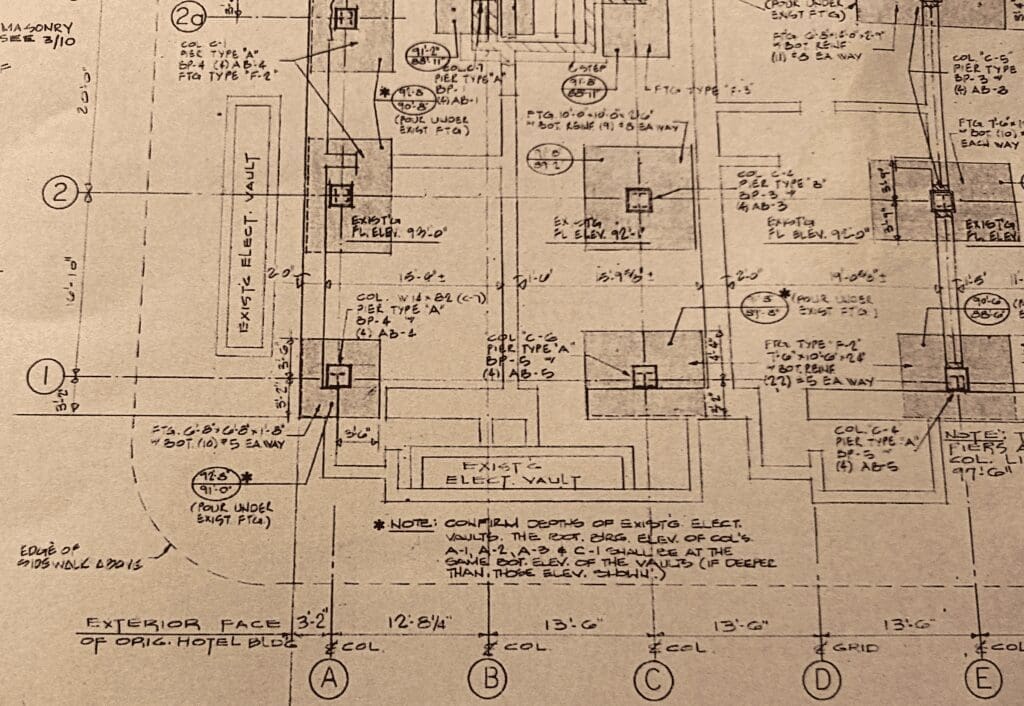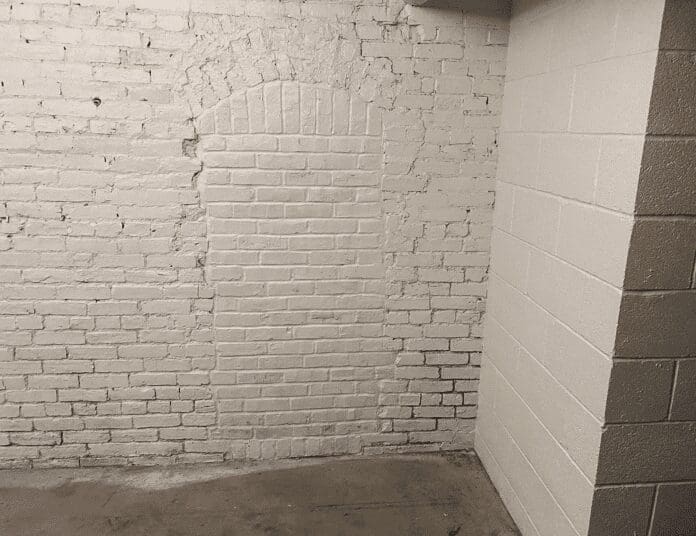(Publisher’s Note: For decades, Wheeling residents heard the rumors that the mob, or the Underground Railroad, utilized hidden tunnels that were allegedly cut under the streets of downtown Wheeling, but now that the $37 million streetscape is nearing completion, those myths have been busted. But …)
Many myths have been told for decades in Wheeling as residents continue to claim there are tunnels beneath the downtown area of the original capital city of West Virginia.
Some believe passageways were created during the mid-1800s, so legislators who were against slavery could sneak in and out of the city where the 35th state was created.
Others claim the hidden network was utilized as an “Underground Railroad” escape route for slaves hoping to escape to an area where freedom could be found.
Prohibition was enacted in the Mountain State in 1914, and some folks believe the tunnels allowed for illegal delivery of alcohol to tucked-away, basement-based speakeasies until the law was repealed nationwide in 1933.
Or was it the Wheeling Mob that created the mysterious underpasses to offer a hiding place for illegal gambling, drug trafficking, and prostitution?
“I have not heard much about mobsters using any tunnels in the downtown area or anywhere else,” said Jeanne Finstein, a local historian in the Upper Ohio Valley. “I have always had the impression that those folks were pretty much out in the open. People cared about it at the time, but it was really a Robin Hood situation where people like Bill Lias were good in one way, and he was good to his employees, but he encouraged gambling and illegal liquor sales.

“Some of the things are legal today but at that time, they were not,” she reported. “I get the impression that Bill Lias wasn’t seen as terrible as we might think today. I personally have not heard any rumors or myths that the mob used a network of tunnels for their crimes.”
Finstein believes most residents who spread the rumors concerning the legendary secret shafts are confusing them with the presence of storage vaults built by businesses at the time when the downtown featured everything from a lumber yard to steamboat manufacturing.
“I do not believe there are tunnels as we would envision tunnels,” Finstein explained. “Now, there are many, many vaults under some buildings and sidewalks in the downtown area. But I believe those vaults were used for storage as if they were basements. As far as tunnels like there were for parts of the Underground Railroad, I don’t think there were any here.
“If there are some areas that appear to be tunnels, it was likely commerce-based and not very extensive,” she continued. “I recall when the large vault uncovered during the excavation for The Health Plan headquarters, initially, there was a lot of talk about tunnels, but then the contractor let the public know it was a storage area and nothing was really found inside of it.”

But Wait! There’s More!
Rusty Jebbia worked in the City of Wheeling’s Public Works Department for more than four decades, so he supervised a plethora of underground infrastructure projects during his career. During the last three years, in fact, the City has replaced water and sewer lines along Main and Market streets in preparation for the upcoming two-year, $37-million streetscape project.
“And those guys never know what they will find under the pavement because of the age of this city,” he said. “There are trolley tracks, the vaults, and pipes and lines that are no longer used but were left under there.
“I heard that quite often when we were doing the original streetscape project back in the late 1970s and early 1980s,” he confirmed. “We would come across these brick-arch areas under the sidewalks in various locations, and there are all kinds of stories about them. Most of the time, the one that we found had been used as storage areas by the businesses in the downtown.”
But not all of them, right?
“Well, around the area of 12th Street, we did find some tunnels that led to the old wharf area where the riverboats used to come to Wheeling. At the time, it was said that those tunnels were used to bring in products they didn’t want to bring in on the streets of the downtown,” Jebbia explained. “At that time, the streets were very busy so the business owners didn’t want to try to move those products and materials.

“They actually used donkey carts that they used to move those materials from the wharf area to their businesses,” he continued. “Now that was one of the stories that I heard at the time that made the most sense, but it wasn’t like there was a whole beehive of tunnels under there. That’s based on what we found at the time, and that included six or eight locations where we did find brick-arched tunnels.”
There are several historic structures in downtown Wheeling and many of them, including the McLure House on the corner of 12th and Market streets, have strange, bricked-off areas in the basement walls. But were those former openings passageways to storage vaults or are they signs of access to the discovered network?
“If there is a bricked-in area in the basement of a building near 12th Street, it could have been part of that tunnel network, but there’s no way for me to be sure of that,” Jebbia said. “I do know that the vaults there were uncovered to make room for The Health Plan were used for storage because of the shelving that we found in them, and in one of them, someone had written, ‘1903’ on a wall.
“At that time, bricks were readily available and a lot easier to get than sandstone of any kind of concrete. The city of Wheeling used to have brick streets all over the place, and during the construction in downtown Wheeling the past few years those crews have found a lot of bricks under there that have been paved over for many years,” he said. “But during those projects, those crews haven’t found anything similar, but that could change when the streetscape gets underway.”

The Long Road to Renewal
The streetscape’s roots date back to 2015, and ever since, city officials have worked with people with the state’s Department of Transportation to design, redesign, finance, and schedule the two-year project. Once complete, most of the streets between 10th and 16 streets will have new sidewalks, intersections, and ADA-compliant access ramps, new trees, and signalization.
Although initially scheduled to begin this year, Jebbia said the state-level design review process extended far past the expected timeline.
“And a part of the streetscape is the removal of all of the sidewalks that were put in about 40 years ago, and we know that, along Main and Market streets, there are many vaults. But this revitalization project is more extensive than what was done in the late 70s and early 80s because it includes 16th Street and many other areas that have been added to it,” the Public Works director explained. “So, we really don’t know that they might uncover.
“We found tunnels back then near Market Plaza, where a large market house once operated, and there were some along Main Street where a lot of businesses operated several years ago,” he added. “And there were some near 12th Street, but when that project was performed, there weren’t any vacant lots and parking lots like what we have today, so who knows what could be under those areas of the downtown?”



I remember in the 60’s and 70’s some business on Main and Market St. Had freight elevators built under the sidewalk. They had plate steel folding doors at sidewalk level. I also think there were some air veneration shafts in the sidewalks in some area’s.